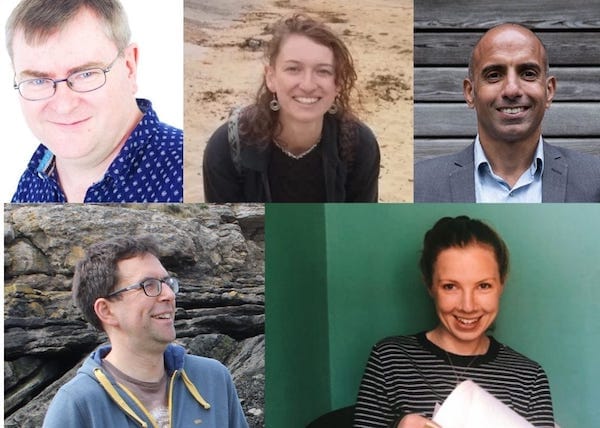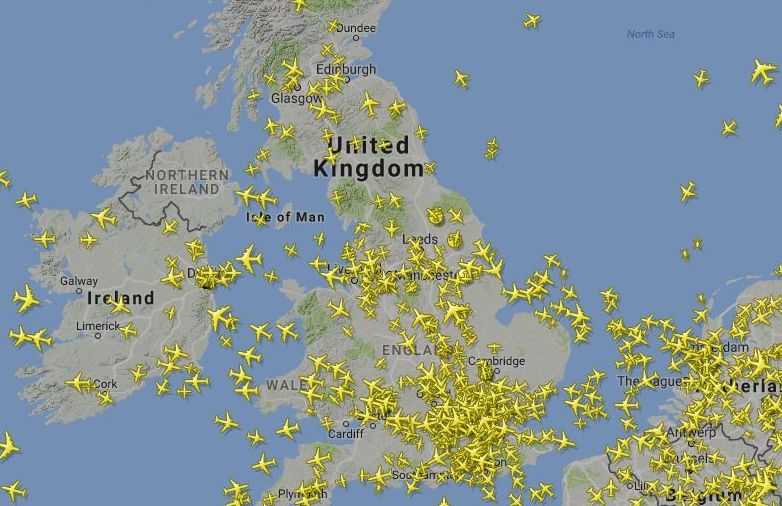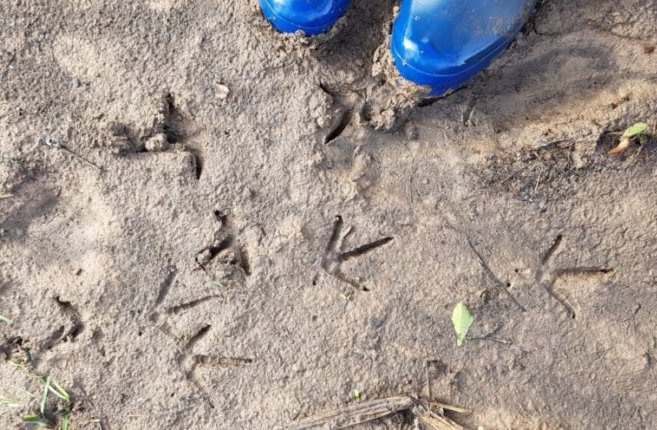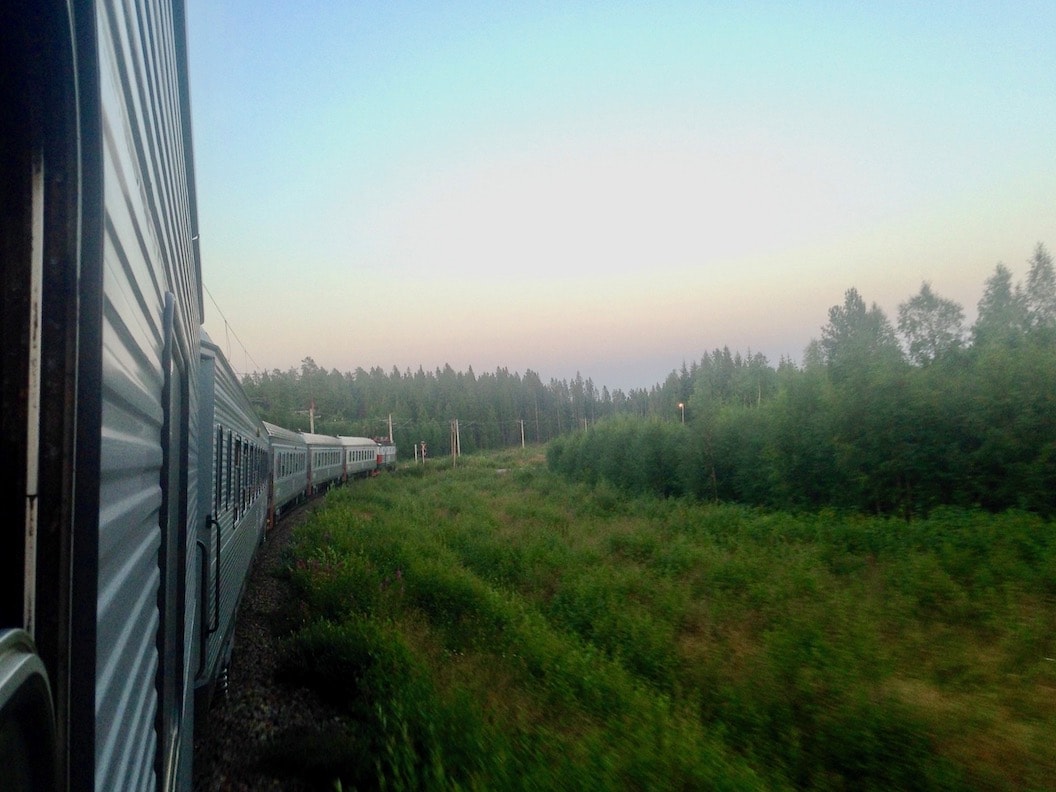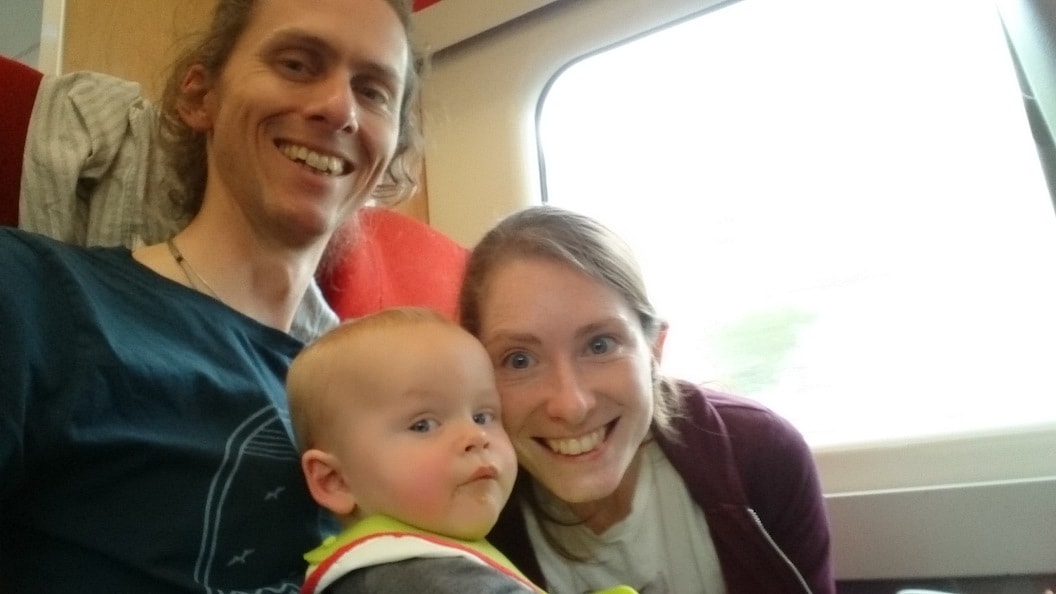
I was brought up in the 80s & 90s in a no-car family.
Everything we needed was within walking and cycling distance: school, a thriving High Street, and the railway station which connected us in 20 minutes to Edinburgh and 40 minutes to Glasgow.
Visiting grandparents was by train north to Aberdeenshire or south to Lincolnshire. Our summer holidays were by train, too, Yorkshire and Wales being particular favourites although sometimes we did choose Scotland. On summer holidays we took bikes, stowed in the guards vans on lovely old 125 and 225 trains.
Lack of flying, lack of overseas holidays and lack of a car were in no way signs of a deprived life. Our childhood holidays were wonderful and I yearn for them often.
"Lack of flying, lack of overseas holidays and lack of a car were in no way signs of a deprived life."
Now an adult and in charge of my own decisions, I remain very uneasy about flying. Aviation is a massive part of the carbon-reliant culture which is destroying our climate and natural world, and bringing huge hardship and suffering to millions. The evidence is everywhere and impossible to ignore, yet somehow we do. As an artist whose work and life is inspired by the natural world I can’t help but worry: how will it be when our two-year-old is my age?
Graduating from Edinburgh College of Art fifteen years ago I knew I wanted to explore Scotland and knew I didn’t want to drive to do so. So I got in touch with rail operator ScotRail and my Scotland By Rail project was born. I’ve worked on it ever since, exploring my home-country by train and documenting it for others to enjoy. The aim is to show what a wealth Scotland’s railways have to offer, from cities and wild nature to our famous islands.
City
One of my last pre-Covid trips was to Aberdeen, delivering paintings to a gallery I exhibit in and visiting the recently refurbished Aberdeen Art Gallery. It’s spacious, fresh and bright, with loads of room for children to move in and lots to interest them. The collection contains some real favourites – Eric Ravilious’ appropriately-named ‘Train Landscape’ among them.
A couple of minutes down the street is St Nicholas Cemetery, a peaceful tree-dappled city-centre escape.
The River Dee flows into a busy working harbour, lined with old fishing communities. Further on, the coastal path is abundant with butterflies, birds, grasses & wildflowers, lighthouses and old fortifications. This is a well known spot for bottlenose dolphins, and the RSPB runs their Dolphinwatch here every year from April to August.
Wild & Remote
Corrour station is on the West Highland Line between Crianlarich and Fort William. The train trundles you north through miles of Rannoch Moor before dropping you off at Corrour. There’s a station house and that’s it. A mile or so down the track, on the edge of Loch Ossian, is a Hostelling Scotland eco-hostel. Train, foot and bike are the only ways to get to it. You bring everything you need and you take away your waste at the end. There are walks in every direction, and an abundance of wildlife: black-throated divers, nesting waders, golden eagles, red deer and ravens. And oh, those stars at night!
Nature Reserve
On the east coast line a little south of Aberdeen is Montrose. A half hour walk out of town gets you to the Scottish Wildlife Trust’s Montrose Basin visitor centre. There’s such a welcome from the knowledgeable staff and volunteers who are always on hand to point out what there is to be seen in the tidal water, mudflats and pebble shore, the reedbeds, hedgerows and wide expanse of sky. Kingfishers, curlews, and 80,000 migrating geese are all to be expected and seen at certain times of year. I’d be there every day if I could.
Montrose is a great place for a holiday, not just a day trip. Other highlights all an hour or less by bike are Montrose beach, Pavilion Cafe (so good), St Cyrus National Nature Reserve, Langley Park Garden, Caledonian (heritage) Railway, Lunan Bay and Red Castle ruins.
Island
I love islands. You have the excitement of the train, then the excitement of the ferry, then the excitement of the island itself. In only four hours on Arran on a day trip from Ardossan Harbour station I was able to visit a cafe, a bakery and a charity shop in Brodick village, walk along field lanes out into the hills where I saw green hairstreak butterflies for the first time in my life and red deer on the hillside circled high overhead by buzzards and a pair of golden eagles. Then back through woodland, along the sandy shore, onto the ferry, train to Dalry station to give one of my art/nature/railway presentations, then train home!
Here's another Arran day: birds, lighthouses, sketches and watercolours.
Europe!
As well as Scotland, train travel puts much of the rest of the UK and Europe within realistic reach. My wife Jennifer and I have taken Eurostar through the Channel Tunnel on various occasions, travelling to Paris, Bruges and Leuven. We even went on a three week tour of Italy all the way from Burntisland, Fife, with an 11 month old.
It might sound daunting but it went so well. Oren spent large amounts of the trip sitting on tables looking out of the windows (and licking them), being carried back and forth to buffet carriages and (such wonderful moments!) sleeping. Going from Turin and Milan to Rome and Naples there’s a fair amount of changing so it won’t be too long until you can get off and stretch your legs at a new station or city.

Why do it?
It’s not just about reducing emissions. By train you see where you’re going and you have more appreciation of the distance you’ve come. You needn’t even take a book. Just look out the window, and notice landscapes and architecture change as the miles pass. See what wildlife you spot, take notes, jot down quick sketches. Chat to fellow passengers. Pretend you’re on the Orient Express. And if you do want to read I suppose I’ll let you – think how much you can get through between Scotland and Naples.
The train is so much more than a necessary part of getting there. It’s a journey, a voyage. It’s a rich and important part of the whole adventure. It’s memories. Train is simply the best way to travel. And you really are helping save those puffins.
The website Seat 61 (and Jennifer) are invaluable in planning rail trips.
Leo du Feu is a Scottish artist, focussing on landscape and nature. Find more from Leo on his blog and website, and via Instagram and Twitter.


